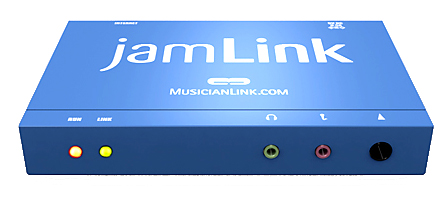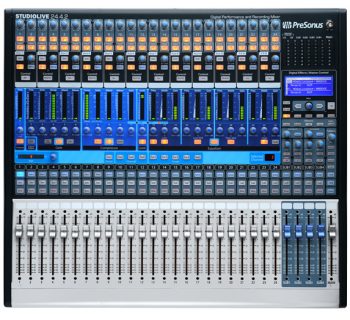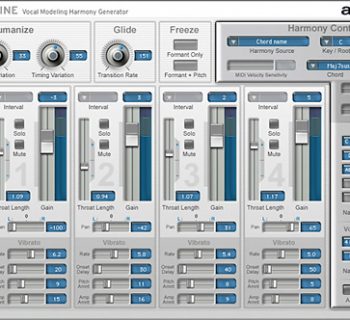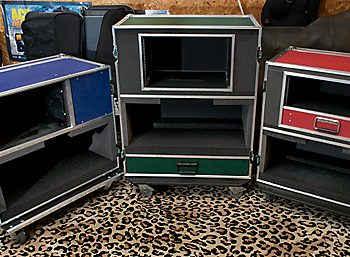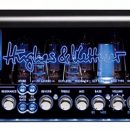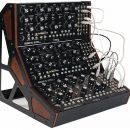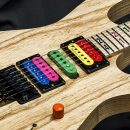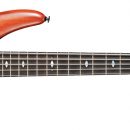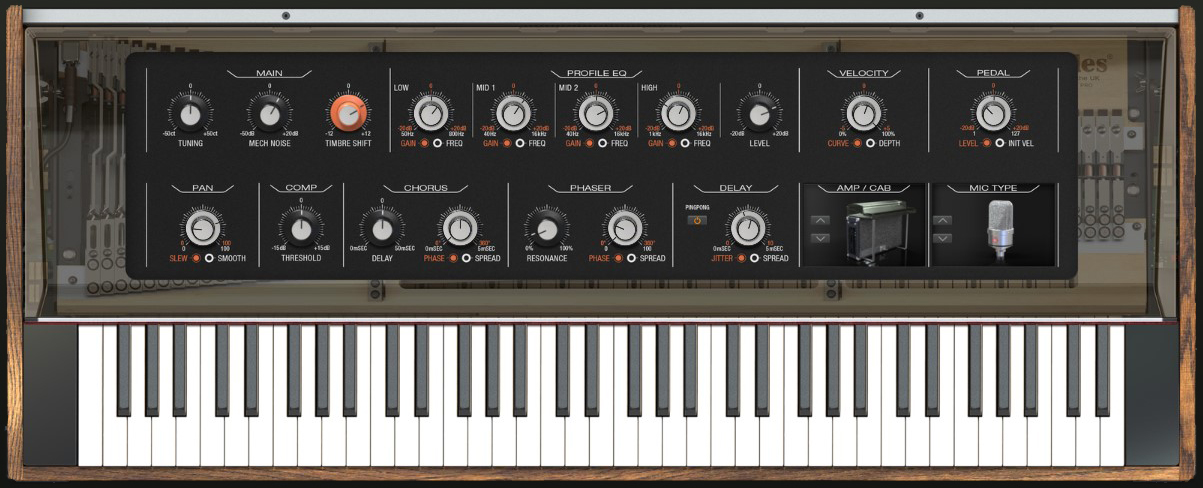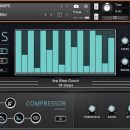 Noise Reduction Unit with MIDI Control
Noise Reduction Unit with MIDI Control
As guitar rigs become more complex, one of the unwelcome side effects is increased noise and hum. Noise gates have been around for years, but one of the biggest issues has been the propensity of some units to chop off the decay of the note along with eliminating extraneous noise. Get your gate dialed in just right for one particular tone and hear it mess up one of your other tones.
Rocktron has been at the forefront of noise reduction technology in guitar rigs for as long as we can remember. We can recall hearing players with huge rack system back in the early ‘90s and being floored by the sonic possibilities, but also by the complete lack of noise whenever those players stopped playing (at least compared with our humble rigs). It was amazing, and the only thing we can liken it to is the first time we heard a CD versus a cassette tape or a vinyl LP.
| Category | Value | Rating |
| Features | 20% | |
| Usability | 25% | |
| Sound | 25% | |
| Documentation & Support | 10% | |
| Price | 20% | |
| OVERALL RATING = 3.8, which earns it a WIHO Award! 3.6 stars or better: Outstanding, WIHO Award 3 stars or better: Worth considering 2 stars or better: Suited to specific needs 1 star or less: Not recommended |
||
The Hush Ultra is the latest product in the Rockton line, offering two channels of noise reduction. But besides upgraded audio specs including true bypass, the most exciting new feature in the Hush Ultra is the memory for programmable presets under MIDI control! MIDI control allows you to dial in different noise reduction settings for your various guitar tones and recall them with a stomp of your foot controller. No longer does a one-gate-fits-all approach have to compromise your rig. High-gain and vintage single coil lovers rejoice!
Features
The Rocktron Hush Ultra is simple to operate, but extremely well thought out. The front panel features three knobs and three buttons. From left to right, you have a preset knob (to select presets directly), an In/Out button, a Store/Edit button, a Hush Threshold knob, a Gate Threshold knob, and a level button for selecting instrument-level or line-level signals.
The rear panel has two balanced XLR inputs and outputs, two unbalanced ¼” inputs and outputs, MIDI In/Out/Thru jacks, and an input jack for the power supply, which is a standard wall-wart-style unit.
There is also a pass-through input for phantom power to your MIDI foot controller. Although we prefer internal power supplies for this purpose, the advantage here is that you’re guaranteed to get the right power to your pedal (via a DIN-7 MIDI cable). Just plug your foot controller’s power supply into the rear of the Hush Ultra and the power passes through to your gear.
The two features we want to focus on here are the Preset knob and the two threshold knobs. As we mentioned above, one of the biggest challenges with a noise reduction unit is being able to set the unit in such a way that only the noise gets filtered out but not the decay of the note.
The Hush Ultra unit allows you to set two different types of thresholds in order to optimize this. The Hush Threshold sets the point at which a downward expander and dynamic filter kick in, while the Gate Threshold sets the level at which the gate begins to operate. Most noise reduction units only have one knob to control the threshold. That more ham-fisted approach is functional, but has a tendency to cut off the decay if you are playing soft passages with, say, a stock Strat with noisier single-coil pickups. The Hush Threshold controls more parameters, which allows you more control, allowing you to obtain silence without cutting off the decay of your notes.
The ability to save and recall presets is great, because you may want to have different settings for different purposes. For example, the late Dimebag Darrell from Pantera often used a noise reduction unit in a more extreme manner (as an effect) to make his rhythm playing more staccato. While that works great for one particular sound, that same setting would probably not work in, say, a ballad where you are using noisier single-coil pickups through your amp’s clean channel, nor would that gate sound work behind a soaring lead guitar solo with sustained notes and big delay lines.
Combine presets with the MIDI control the Hush Ultra provides, and you can control the program changes in the Hush Ultra instantly from your rig’s foot controller. Very cool!
Usability
The Hush Ultra is designed for use in a variety of different rigs. You don’t need to have a huge refrigerator-sized rack system with multiple preamps, slaved heads, and a rack full of effects units and switching systems to use the Hush Ultra. If you have a noisy guitar and play direct into the amp, you can just place the Hush Ultra between your guitar and the amp and simply set the reference level switch to -10dB. Or, stick the Hush Ultra in your effects loop and set it to +4dB.
Operation was straightforward, once you understand the relationship between Hush Threshold and Gate Threshold, well explained in the documentation. It’s a slight balancing act, but it’s precisely this level of control that enables the Hush Ultra to work as well as it does.
MIDI control worked great in our live rigs. The Hush Ultra responded to MIDI program change messages readily, and we were able to map one of our continuous controller (cc) footswitches to the true bypass feature for direct On/Off control. Individual gate settings can be directly manipulated via CC messages, too, but we didn’t test that feature as we just can’t see a real need to use it given this product's typical use in a guitar rig. If you crave real-time control over the settings of your noise gate, suffice to say it’s in here and knock yourself out.
If you’re running different settings to each side of the unit, you can unlink them and configure gate settings for each side independently via the display (or MIDI). In typical stereo guitar rigs, though, there’s no real need to do that.
Sound
The best we can ask for is our tone without the noise, and the Hush Ultra performed admirably in this regard. The unit has true bypass for when you don’t need it, so you can switch the unit out and have no impact on your tone. Bear in mind that you will still get the sonic effects of running additional cables, so if you are using the Hush Ultra in between the guitar and amp, there might be some sonic difference. However, in a low-impedance context, such as being used in the effects loop — our preferred placement for the Hush Ultra, or in the studio rig, as we did above, there was no sonic difference at all.
We tested the Hush Ultra through a variety of setups. The first was the most basic, using a stock Fender Stratocaster in a, particularly noisy environment with fluorescent lighting and a somewhat noisy, dirty power source. Typically we would need just accept the hum and buzz from the guitar, angling the guitar to the amp in such a way as to minimize the hum, but the Hush Ultra made it a breeze to regain silence in between our notes. We simply plugged the guitar’s output into the Hush Ultra, set the reference level to -10dB, and set the two threshold knobs until we were able to dial out only the noise and not the decay of the notes.
In a second rig, we plugged a bunch of pedals into the front end of an amp, and plugged the output of the last pedal into the input of the Hush Ultra, and then the output of the Hush Ultra into the amp’s input. Again, we were greeted with the wonderful sound of silence.
In a variation on the second rig, we put the Hush Ultra into the effects loop of our amp instead of following the last pedal, set the reference level to +4dB, and obtained similarly great results.
In a third rig, we used the XLR inputs and outputs into the patch bay of our recording studio rig, and used the Hush Ultra to tame extraneous noise while we were mixing. Again, the results were nothing short of spectacular.
Documentation and Product Support
The Rocktron Hush Ultra comes with a very well written, easy-to-understand manual that is only 18 pages long. There are several examples and schematics showing how to set up the unit, so getting it up and running in your rig should be a breeze.
Price
The Rocktron Hush Ultra (MSRP $399) has a street price around $300, and we found that to be a fantastic price given the effectiveness of this unit coupled with its MIDI capabilities. For the price of just a couple of pedals (or a pricier boutique pedal), you can have silence in your rig and the ability to tailor it to a variety of different applications, even on a song-by-song basis.
Contact Information
Rocktron
www.rocktron.com
| Evaluation Short-List |
|



